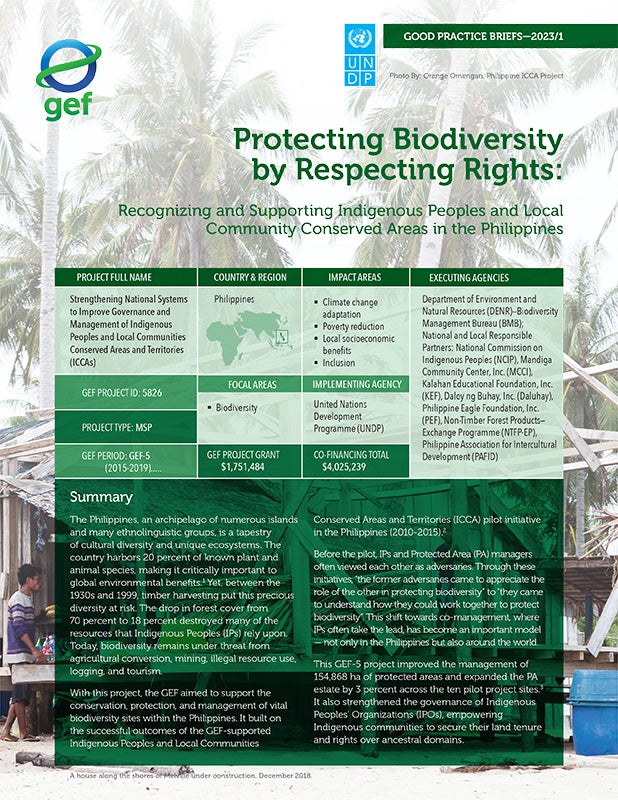The Philippines, an archipelago of numerous islands and many ethnolinguistic groups, is a tapestry of cultural diversity and unique ecosystems. The country harbors 20 percent of known plant and animal species, making it critically important to global environmental benefits. Yet, between the 1930s and 1999, timber harvesting put this precious diversity at risk. The drop in forest cover from 70 percent to 18 percent destroyed many of the resources that Indigenous Peoples (IPs) rely upon. Today, biodiversity remains under threat from agricultural conversion, mining, illegal resource use, logging, and tourism.
With this project, the GEF aimed to support the conservation, protection, and management of vital biodiversity sites within the Philippines. It built on the successful outcomes of the GEF-supported Indigenous Peoples and Local Communities Conserved Areas and Territories (ICCA) pilot initiative in the Philippines (2010-2015).
Before the pilot, IPs and protected area (PA) managers often viewed each other as adversaries. Through these initiatives, the former adversaries came to understand how they could work together to protect biodiversity. This shift towards co-management, where IPs often take the lead, has become an important model — not only in the Philippines but also around the world. This GEF-5 project improved the management of 154,868 hectares of protected areas and expanded the PA estate by 3 percent across the 10 pilot project sites. It also strengthened the governance of Indigenous Peoples’ Organizations (IPOs), empowering Indigenous communities to secure their land tenure and rights over ancestral domains.
